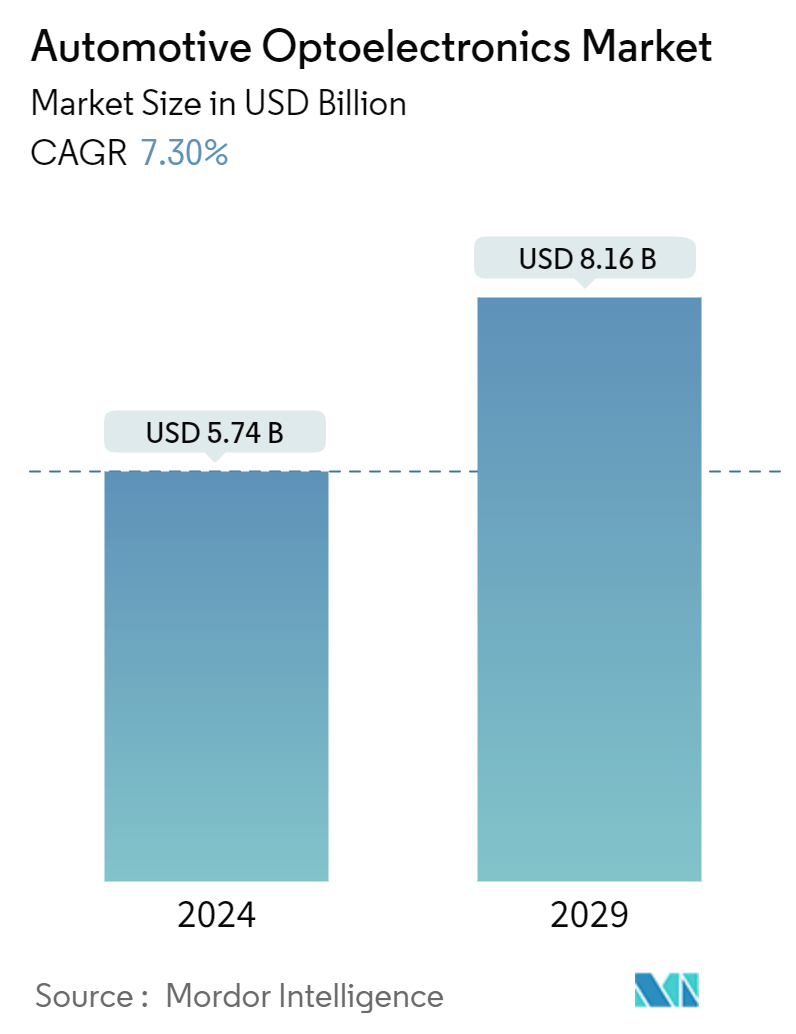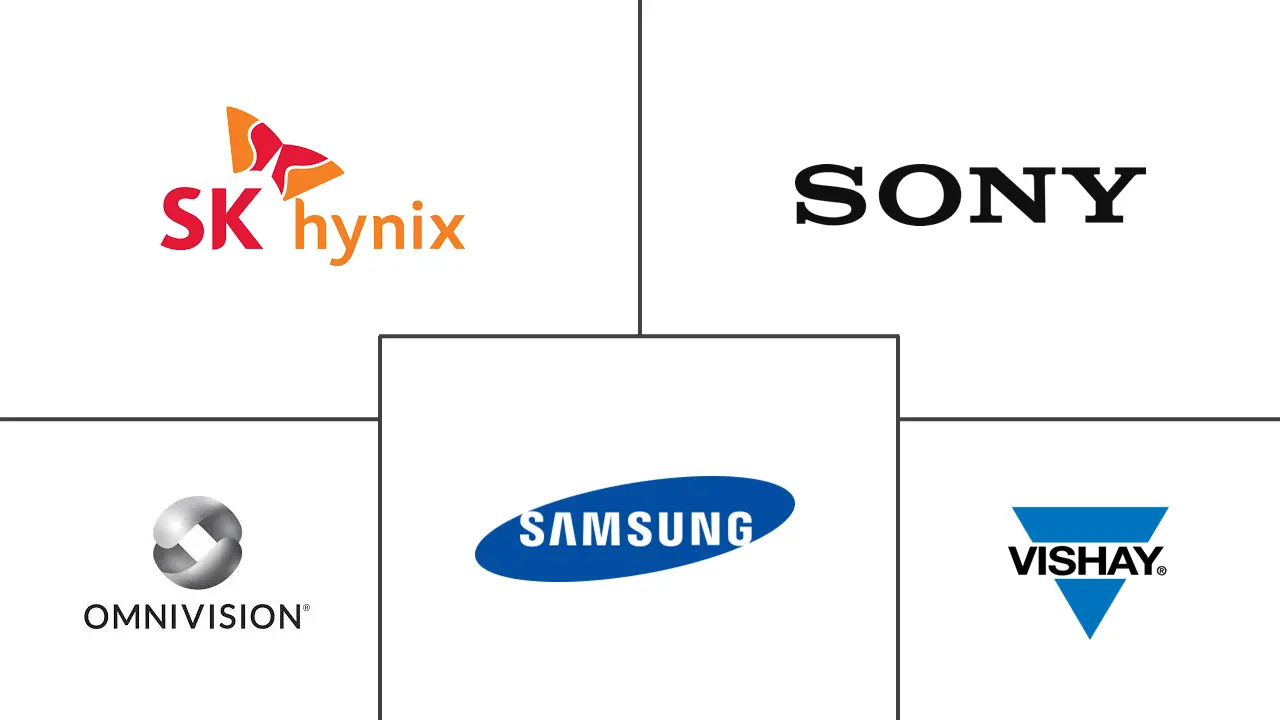Market Size of Automotive Optoelectronics Industry

| Study Period | 2019 - 2029 |
| Base Year For Estimation | 2023 |
| Market Size (2024) | USD 5.74 Billion |
| Market Size (2029) | USD 8.16 Billion |
| CAGR (2024 - 2029) | 7.30 % |
| Market Concentration | Low |
Major Players
*Disclaimer: Major Players sorted in no particular order |
Automotive Optoelectronics Market Analysis
The Automotive Optoelectronics Market size is estimated at USD 5.74 billion in 2024, and is expected to reach USD 8.16 billion by 2029, growing at a CAGR of 7.30% during the forecast period (2024-2029).
- The optoelectronics market is witnessing significant progress, propelled by the convergence of optical communication, optical storage, and optical imaging sectors. Additionally, the rising demand for electric vehicles further drives the optoelectronics market. For instance, the International Energy Agency (IEA) projected that electric vehicle (EV) sales will make up approximately 65% of total car sales by 2030 in the Net Zero Scenario. To achieve this, there should be an annual growth rate of around 25% in EV sales from 2023 to 2030.
- LEDs have emerged as the de facto standard in display technology for electronic devices. This shift is primarily due to heightened consumer expectations for improved performance and resolution. LED lighting finds diverse applications in automotive settings, from headlights to taillights and interior illumination. With the ongoing electrification of vehicles, managing power consumption has emerged as a pivotal concern. LED technology not only curtails power usage but also extends product lifecycles, provides design flexibility, and enhances control.
- Optoelectronics find numerous applications in various aspects of automotive technology, driving innovation and enhancing safety, efficiency, and connectivity. They are employed in advanced driver-assistance systems (ADAS). These systems rely on sensors, processors, and communication modules to enable features such as adaptive cruise control, lane departure warning, and collision avoidance.
- According to the National Safety Council, by 2026, approximately 71% of registered vehicles will be equipped with rear cameras, while 60% will have rear parking sensors. Such increasing adoption of ADAS (Advanced driver assistance systems) is expected to aid the growth of the market studied.
- Technological advancements in communication, controls, and embedded systems are shaping the emergence of an intelligent vehicle grid. Today's cars function as sophisticated sensor platforms, gathering data from their surroundings and other vehicles. This data is then relayed to drivers and infrastructure, aiding in tasks such as safe navigation, pollution control, and traffic management. Further, according to the World Economic Forum, over 12 million fully autonomous cars are anticipated to be sold annually by 2035, covering 25% of the global automotive market, further uplifting the scope of cameras and devices per vehicle.
- The increasing inflation and interest rates have reduced consumer purchasing power, which is expected to reduce the demand for vehicles and hamper market growth. Further, the Russia-Ukraine War increased the strain on the global supply chain, as Russia and Ukraine were the major exporters of metals and minerals, as well as oil and gas. Ukraine possessed significant deposits of natural resources, including coal, natural gas, iron ore, titanium, lithium, and rare Earth minerals, enabling a shift away from relying on China and Russia for energy resources.
- Geopolitical conflicts, such as the invasion of Ukraine by Russia, have further disrupted the semiconductor supply chain. For example, the production of neon, a critical component for chip manufacturing, was affected when Ukraine’s leading neon suppliers halted operations. Trade disputes, export controls, and regulatory changes have disrupted the flow of raw materials and components, further exacerbating the optoelectronics shortage.

